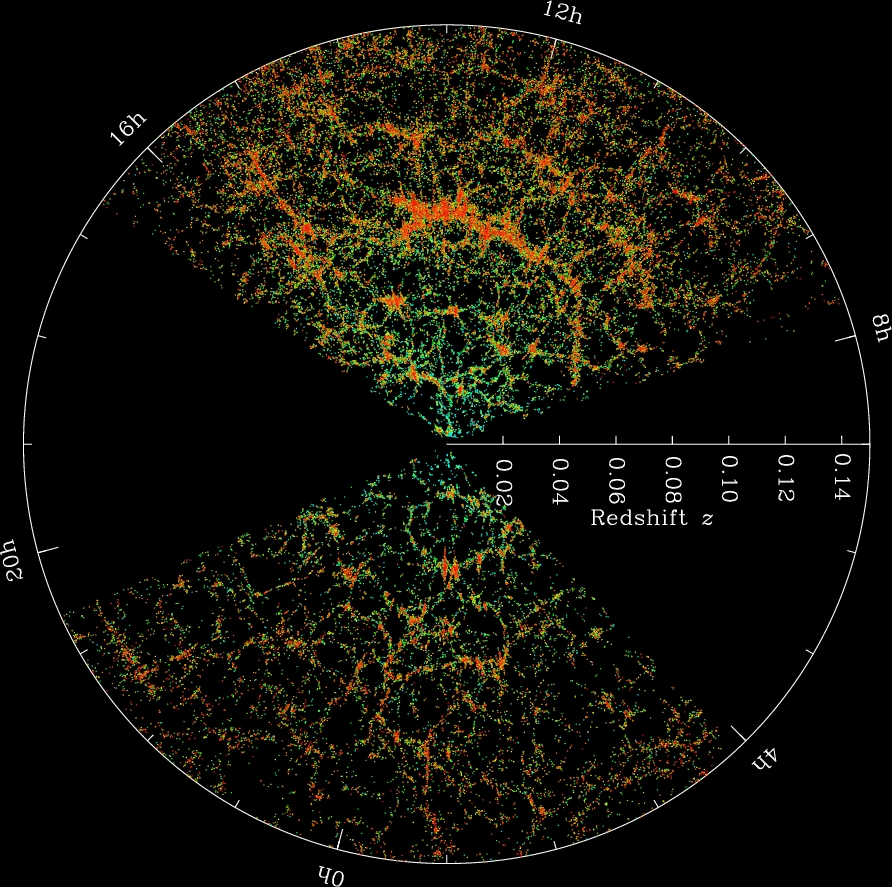It looks like you're using an Ad Blocker.
Please white-list or disable AboveTopSecret.com in your ad-blocking tool.
Thank you.
Some features of ATS will be disabled while you continue to use an ad-blocker.
share:
No.
originally posted by: Archivalist
Is there some diode like, drop-off?
As I said it may never be fully cancelled out, but just immeasurably small, like when you drop a paper clip. Not only does the paper clip accelerate toward the Earth, but the Earth also accelerates toward the paper clip. You probably don't need to know a lot of math to figure out why you can measure the former but not the latter, because the Earth is a lot more massive, so the acceleration will not only be exceedingly small, but it will also be dwarfed by other things which have more mass than the paper clip having effects on the earth, like waves breaking on the beach, trees falling, etc.
Is there a known point, where acceleration of matter towards other matter will fully cancel out all expansion effects, with a one-way street? How would we even indicate that? The two mass values and the acceleration rate?
If you want to do the math you can calculate exactly how much the Earth would theoretically accelerate toward the paper clip, and confirm it's too small to measure. But using math and doing research on how satellites track the earth's motions you might be able to determine the minimum measurable acceleration of the Earth, and how much mass would have to fall to be able to create that much acceleration. I haven't done this but I think large landslides can have a tiny effect on the Earth but with sensitive enough instruments you might be able to measure some of those effects. There is still a lot of noise so you also have to be sure that the signal (created by the landslide) is greater than the noise created by all the other things moving and falling on earth, waves crashing, trees falling, and whatever else falls.
That math and concept is a little simpler so I used that example, but comparing competing forces for the motion of objects in the universe will also need to consider similar issues like signal to noise, and also the relative strengths of the competing forces and motions of the objects. If you want to dig into the details of how you would go about making those calculations, here is a good article which explains how you would go about doing it.
Will The 'Great Attractor' Defeat Dark Energy?
That article considers calculating what will happen in our neighborhood of the universe, but the same method could apply anywhere that you have accurate enough observations.
One of the factors to be considered is the matter density. In this map of the Sloan digital sky survey, each dot is a galaxy.

This is a 2D slice of a 3d map so you'd also need to consider the 3D data, but this slice can illustrate the way galaxies tend to clump together, and then have large spaces in between. So intuitively you can look at this and surmise where we see the largest areas of black there are the fewest galaxies and the least impediment to expansion. The more dense the dots are, the more you're going to have gravitation working against the expansion. So this should give a graphical picture of how it's not like a diode, the matter density is not an "on" or "off" thing, it varies. That's just the visible matter so to get more accurate you'd also need to consider dark matter, that's on another map but it tends to clump around matter so it would be somewhat similar, with maybe a few differences like the bullet cluster.
As the link describes this is not the only factor, because motions also need to be considered. If two galaxies with no motion relative to each other are far enough apart where dark energy can cause them to separate, that picture changes if the galaxies instead have relative motion toward each other, say like our Milky Way galaxy and the Andromeda galaxy. So considering so much data in detail in 3D can get somewhat complicated, but hopefully you can get some idea from the article how you could approach the calculations.
new topics
-
A Warning to America: 25 Ways the US is Being Destroyed
New World Order: 4 hours ago -
President BIDEN's FBI Raided Donald Trump's Florida Home for OBAMA-NORTH KOREA Documents.
Political Conspiracies: 9 hours ago -
Maestro Benedetto
Literature: 11 hours ago -
Is AI Better Than the Hollywood Elite?
Movies: 11 hours ago
